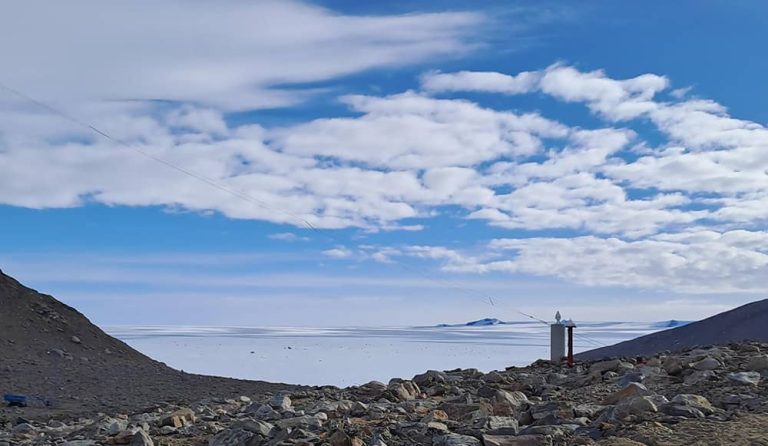Home > What We Do > Research > Atmosphere
Monitoring and understanding Earth’s atmosphere are central to supporting the functioning of healthy ecosystems and economies. Earth and Space Research engages in a wide array of atmospheric sciences. These topics, like many in geoscience, are interdisciplinary. We partner and collaborate with researchers, institutions, and problem-solvers world-wide to make sure our teams are diverse enough to answer the questions we ask, and solve the problems we want solved.
Radiation is one of the primary drivers of changes in the surface energy balance, i.e., what we feel at Earth’s surface. Understanding how the atmosphere and its underlying surface transmits, reflects, absorbs, or emits radiation facilitates accurate predictions of future climate conditions. ESR scientists engage in a range of activities from observation to modeling of radiation over polar region surfaces.
Clouds have the ability to regulate the radiation balance of Earth’s surface, as well as embody keystone processes in the hydrologic cycle of the atmosphere. ESR scientists study bulk and microphysical properties of clouds in polar regions, using a combination of ground- and satellite-based remote sensing techniques.

Collecting and curating measurements of atmospheric variables and processes requires combination of scientific knowledge, engineering know-how, and analytic skill. ESR scientists are engaged in a range of data collection, curation, and analysis activities focused on places like Mount Baker and the Greenland Ice Sheet. We are part of a team that has developed and deployed a medium-power cloud observatory on the Greenland Ice Sheet, as well as a team that is installing a new cloud observatory at Troll Station, Antarctica.

It is often necessary go to remote places to understand them better. This is as true for understanding the atmosphere as it is for understanding any aspect of the climate system. Field work is usually cost-intensive endeavor. ESR scientists are experts in safe, productive, efficient, and inclusive field work. We have participated in oceanographic and atmospheric expeditions to both poles, as well as led high school students in studies of the local Washington snowpack.

Models of a range of complexity are used to unify theory with observations to create a consistent picture of each component of the Earth System. ESR scientists write and run models of simple and intermediate complexity to probe understanding of impacts of meteorology on polar snow surfaces, among other things. In partnership with Northeastern University, ESR scientists are developing AI/ML models to better predict melt occurrences over the Greenland Ice Sheet.
The following projects related to the atmosphere have had ESR scientist involvement: